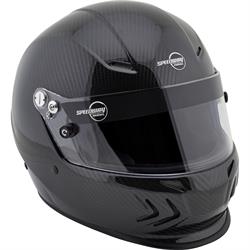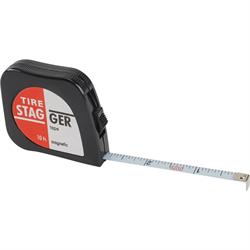Racing Helmet Sizing Charts And Measurement Guide
A properly fitting helmet is crucial to the performance and safety it will provide. This guide will walk you through the steps needed to ensure a snug fitting helmet that is comfortable, safe, and fits correctly.
How to measure head size for helmet
The first step in finding the correct helmet size is to measure your head. Measure around the circumference of your head using a flexible tape measure. A clothing tape measure or a stagger tape measure work very well for this. Another option is to use a piece of string and wrap it around your head marking the overlap point of the string. You can then lay the string out straight on a flat surface and use a standard tape measure to record the length of the string.
Take the head measurement one inch above the eyebrows around to the largest point at the back of your head. Record several measurements to ensure you have the largest circumference as well as a repeatable measurement. The accuracy of this head measurement is critical to selecting the correct size helmet, so take your time and be precise.
Compare to the Helmet Sizing Chart
Now that you have an accurate measurement of your head size it is time to consult the helmet sizing chart for the specific brand of helmet you would like to purchase. The sizing from one manufacturer to the next will vary so be careful to use the proper chart for the helmet you are purchasing. Below are links to the sizing chart for each of the brands that we offer.
Deciding Between Helmet Sizes
Occasionally your head size measurement will fall in-between sizes according the the sizing chart. For example a person with a head measurement of 23" looking to purchase a Speedway helmet will need to decide between a size Medium (22-3/8" to 22-7/8") and a Large (23-1/8" to 23-3/4"). In this instance we suggest taking the shape of your head and face into consideration. Someone with a narrower or slimmer head and face shape at 23" may fit well in a size Medium, however a person with a round or fuller face shape at 23" would likely fit better in a size Large.
Another point to consider when deciding between sizes would be your past experience when fitting helmets. If you have experienced a pressure point at the top/front of your head and increased one size to solve the issue then you have a good indicator that you would lean toward the larger size when selecting your new helmet. Conversely if you have experienced a loose fitting helmet when ordering per a sizing chart and the issue was resolved by moving down one size then you may want to sway toward the smaller size.
Test Fitting a Helmet
Now that you have made your selection and received your new helmet the next step is to test fit it. The helmet should fit snug but not so tight that it hurts or causes a headache when worn for an extended period of time.
- When pulling the helmet over your head grab the chin strap in each hand and spread the helmet slightly with your thumbs. If the helmet slips on easily with little or no effort that is the first sign that your helmet is too large.
- With the helmet pulled completely on your head stand in front of a mirror and attempt to swivel the helmet left to right as well as up and down while holding your head steady. If the helmet slides across your forehead and cheeks then it is too large. If the skin on your forehead and cheeks move with the helmet as you rotate it, and do not allow the helmet to swivel on your head, then you have a proper snug fitting helmet.
- Before you head to the track make sure your helmet is comfortable to wear for an extended period of time. We suggest wearing your new helmet around the house for a minimum of 30 minutes. If you can sit and watch your favorite television show, race series, or sports team comfortably then you have likely chosen the proper size helmet.
Cheek Pad Selection
Some helmets are equipped with removable cheek pads. This provides the ability to remove the pads for cleaning and also allows you to select thicker or thinner pads to customize the fit of your helmet. If your helmet has this feature and your cheeks are squished excessively then you can use one size thinner cheek pads to solve the problem. Removable cheek pads certainly add to your ability to achieve a comfortable fit so this may be a feature you want to look for in your new helmet.
What if I Need a Different Size?
We realize that shopping for helmets and finding the correct size will often require a size change. For that reason we allow returns or exchanges for a different size within 60 days of purchase as long as the helmet has not been used to race with and was simply test fit around the house. The helmet must be in original factory condition with no modifications or alterations. Returned merchandise must include original packaging materials, warranty cards, manuals, instructions, etc.
You can view our return policy and instructions here or print out a return form here.



